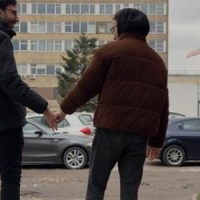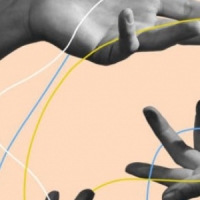UNIAN Information Agency (2018). Domestic violence now criminal offense in Ukraine [online] Available at: https://www.unian.info/society/2285764-domestic-violence-now-criminal-offense-in-ukraine.html [Accessed 25 Sep. 2019]
In December 2018, the Verkhovna Rada adopted bill 4952 on the criminalization of domestic violence, bill 5294 on preventing and combating domestic violence and bill 727 on applying additional measures against those who systematically fail to pay alimony. The bills took effect in 2019, and the influence of this criminalization of domestic violence is still to be seen.
UNFPA Ukraine (2018). 16 Days of Activism against Gender-Based Violence in Ukraine
Calling for action, this report shows through key-figures how gender-based violence is widespread and systematic in Ukraine. 83 percent of all violence in Ukraine is domestic violence, and 90 percent of gender-based violence is directed towards women. The National Representative Survey on the prevalence of violence against women and girls (2014) shows that more than 22 percent of 15-49-year-old women have experienced physical and/or sexual violence. Violence primarily happens during the night. This goes for all types of violence, be it physical, sexual or psychological. In general, there is little support for women who are victims of domestic violence. 12 Ukrainian regions have mobile teams giving psychosocial support and targeted assistance. Since November 2015, they have dealt with 40,388 cases of gender-based violence, and since January 2016, the National Gender-Based Violence Hotline received more than 82,477 calls. 82 percent of these cases were incidents of domestic violence. The report highlights that women who face several forms of discrimination because of their sexuality, ethnicity, physical abilities and health are much more vulnerable to all forms of gender-based violence and less likely to report incidents due to systemic discrimination and stigmatization. For example, more than a third of women diagnosed with HIV have experienced violence from a partner.
UNFPA (2018). Masculinity Today: Men's Attitudes to Gender Stereotypes and Violence Against Women
Based on survey results, this report explores the male perspectives on masculinity, family structures and domestic violence, ultimately aiming towards finding strategic methods for mitigating domestic violence. The survey shows that gender roles are closely related to responsibilities within the family, men being the breadwinners and women the caretakers. Yet the survey findings demonstrate a gradual transformation amongst young men, as many men ages 18-24 voiced that all family activities and tasks should be a joint responsibility or even equally divided. The survey also shows that young men are increasingly involved in family planning and the raising of their children. About one-third of men under the age of 40 reported to have taken a leave when their child was born. The same is true for 24 percent of men aged 40-49 and 18 percent of men aged 50-59. Even so, fathers spend less than half as much time with their children as mothers, and the fathers’ contact with their children is often limited to leisure activities and scolding.
The survey shows that domestic violence - emotional, economic, physical and sexual - is a widespread, normalized, systemic issue. A third of the respondents indicated that they have one or more male friends who commit physical violence against their partners, and a big proportion of the men report to having used violence themselves. Almost one-third of the men admit to having used emotional violence against their stable partners at least once in their lives, and one in seven respondents reported to have used economic violence in his partnership. 13 percent reported that they had used physical violence against their partners, and 5 percent of the surveyed men reported to have forced their unwilling partner to have sex or do sexual things. 3 percent report to have forced sex upon a woman who was not their stable partner. 18 percent of the men think that physical violence can be justified if a woman cheats on a man. 5 percent consider violence justifiable if a woman doesn’t want to have sex with her husband. A high percentage of the men also report that they exert social control over their partners. More than half of the men constantly want to know where their partner is, and 22 percent of the men regulate their partners’ use of clothes and make-up. 18 percent of the men tell their partners who they are allowed to spend time with. The survey results are based on self-reporting, whereby some underreporting of violence is expected. In 58 percent of cases, the violence is directed towards a wife or partner, and in many cases, alcohol or other substances are involved. The survey also shows a strong tendency for men to legitimize violence against women in general. For example, many of the men question the legitimacy of rape charges if the woman was affected by alcohol or drugs (about 50 percent), if the woman has a bad reputation (43 percent), and if the woman did not fight back (about 33 percent).
More than 50 percent of the perpetrators who cooperated with social services to break the cycle of violence consider family conflicts a private problem. Yet about 25 percent admit that psychologists or social workers can help break patterns of violence if all family members are involved in the therapy. Of the perpetrators, 13 percent indicate that interventions towards the violent men may have an effect. Information campaigns, trainings and moral codex building were less supported. The men behind violent acts are less willing to listen to specialists than to their parents, friends and - to a lesser extent - their wives.
Dean, L. (2018). The Continuum of Gender Based Violence in Ukraine [Online] Available at:https://blogs.lse.ac.uk/wps/2018/10/23/the-continuum-of-gender-based-violence-in-ukraine/ [Accessed 11 Sep. 2019]
In this blog, Laura Dean comments on the state of gender-based violence in Ukraine before and after 2014 - the year the war in Eastern Ukraine broke out. She argues that though reporting of domestic violence has gone up in the years following the war, domestic violence was equally dominant before the war. According to a public opinion survey, nearly half of the Ukrainian population has experienced or witnessed domestic violence. As a result of the war, the focus on violence in society in general increased, which has spurred more awareness of domestic violence. Before the war, domestic violence was considered a private issue. However, with the increasing awareness of domestic violence, the government criminalized domestic violence in 2018 - with no state funding for its implementation, whatsoever. Housing privatisation poses an obstacle to women escaping violence as they become economically locked. Human trafficking was prevalent before the war and continues to be a big issue. Forced labour, sex trafficking and child begging flourishes in Ukraine due to gender inequality, labour migration, corruption and inefficient law enforcement and victim-stigmatisation, she argues. As a large group of Ukrainians have been internally displaced during the war, they are especially vulnerable in terms of trafficking. Labour trafficking of men has generally been dominant with the exception of 2015 where the majority of victims were female. Though the situation is grave, Laura Dean mentions the potential of new groups and institutions that may spur initiatives against gender violence.
UNFPA, Ukrainian Centre for Social Reforms (2017). Economic costs of violence against women in Ukraine 2017
In this report, UNFPA estimates the economic costs of violence against women. The estimates are based on 1) lost economic output due to death, reduced productivity and disability, 2) cost of medical and juridical assistance and 3) material losses and expenses of survivors. Based only on the registered violence cases, violence against women cost 10.8 million dollars in 2015. Adjusting for actual numbers of violent acts, the costs totalled up to 208 million dollars in 2015, equivalent to 0.23 percent of Ukraine’s GDP. The lost economic output in 2015 due to death and disability caused by gender-based violence is estimated at 3.7 million dollars for 2015. An estimate of 1.1 million women aged 15-49 years are subject to physical and sexual violence. The economic costs of the violence are primarily paid by the victims themselves, because the state does not provide shelters and specialized services for survivors. The cumulative expenses for the survivor amount to 190 million dollars annually. On average, Ukrainian women spend about 200 dollars on rehabilitation, etc., which is only possible with quite high salaries. Unemployed and low-income women are thus particularly vulnerable, no matter the extent of the violence they experience. International studies show that each dollar invested in preventing gender-based violence saves the economy 5-20 dollars in future service costs. The 25,600 dollars that were spent on preventing domestic violence in Ukraine in 2015 went to law enforcement and penitentiary systems, not to healthcare and social assistance for survivors.
UNFPA Ukraine (2018). Gender-based Violence in the Conflict-affected Regions of Ukraine. Analytical Report, Ukrainian Centre for Social Reforms
This report comprises the findings from a survey, interviews with women and female focus groups that address gender-based violence in the conflict-inflicted regions in eastern Ukraine, 2015. The survey covers the government-controlled areas, Donetsk and Luhansk oblasts, and the oblasts with the highest influx of internally displaced people, Dnipropetrovsk, Zaporizhzhya and Kharkiv oblasts. Violence rates are significantly higher in these regions, and internally displaced people are more vulnerable when it comes to being exposed to violence. The report lists the frequency of different types of violence and discusses the circumstances of these incidents, such as where, when and with whom the violence occurs. Furthermore, it offers interesting statistics on why women do not seek legal, medical and psychological support. The most prevalent reason is that they do not experience a need for help. Other common reasons is the fear of future violence, no access to facilities near themselves and no trust in the personnel.
Martsenyuk, T. (2015). Early marriage in Roma communities in Ukraine: cultural and socioeconomic factors, Employment and Economy in Central and Eastern Europe, No. 1
In this study, Tamara Martsenyuk sheds light upon early marriage in Ukrainian society, particularly in Roma communities. The study investigates cultural and socio-economic factors that affect Roma women who marry early. In Ukraine, men and women can get married at the age of 18. However, the Family Code of Ukraine 16-year-olds can gain permission to marry if marriage is deemed in their interest. Pregnancy and religious beliefs are the main reason for permitting early marriage in Ukraine. The state program “Reproductive Health of the Nation 2015”, which holistically addresses different aspects of family planning, reproductive health and sexual education, is being implemented very slowly - especially in rural areas - due to insufficient funding. For women in the Roma minority, discrimination in health care is common, and Roma girls’ school attendance is below the national average. The notion that Roma’s make up a Ukrainian minority further silences Roma women’s public voice, because the discrimination they face is seen as cultural traditions rather than women's rights violations. Martsenyuk argues that there is a need for more gender-awareness in projects and research regarding Roma minorities, recognition of Roma women’s agency and critical approaches to how international organizations discuss early marriage.
DCAF and La Strada-Ukraine (2017). Criminal Justice Practice and Violence against Women. Assessment of the Readiness of the Ukrainian Criminal Justice System to Implement the Principles of the Istanbul Convention
Aiming to provide a baseline for improving criminal justice and policy responses to domestic violence and violence against women, this report assesses the current state of the Ukrainian criminal justice system. The assessment in made based on the requirements of the Council of Europe Convention on preventing and combating violence against women and domestic violence (the Istanbul Convention), which was signed by Ukraine in 2011. The assessment reveals that three factors makes persecution of violence perpetrators ineffective in Ukraine. Firstly, most incidents of gender-based violence are not reported. Secondly, most reported cases of violence and rape do not result in convictions. Thirdly, there are neither initiatives to prevent violence from happening in the first place nor initiatives to prevent violence from repeating itself. The report identifies three main causes of the ineffective justice system. The first cause is pervasive gender stereotyping and gender bias, leading to victim blaming and silencing of culturally ‘private’ issues such as violence. The second cause is a lack of individual capacities in the criminal justice system. For instance, there is a lack of knowledge about domestic violence, and many practitioners are unaware of the dynamics of violence and the institutions available to support victims of gender-based violence. The third cause is insufficient institutional capacities. This is both due to understaffing and a lack of standardized trainings, guidelines and procedures for practitioners. Institutional as well as individual levels thus must be strengthened in order for The Istanbul Convention to be implemented.




















